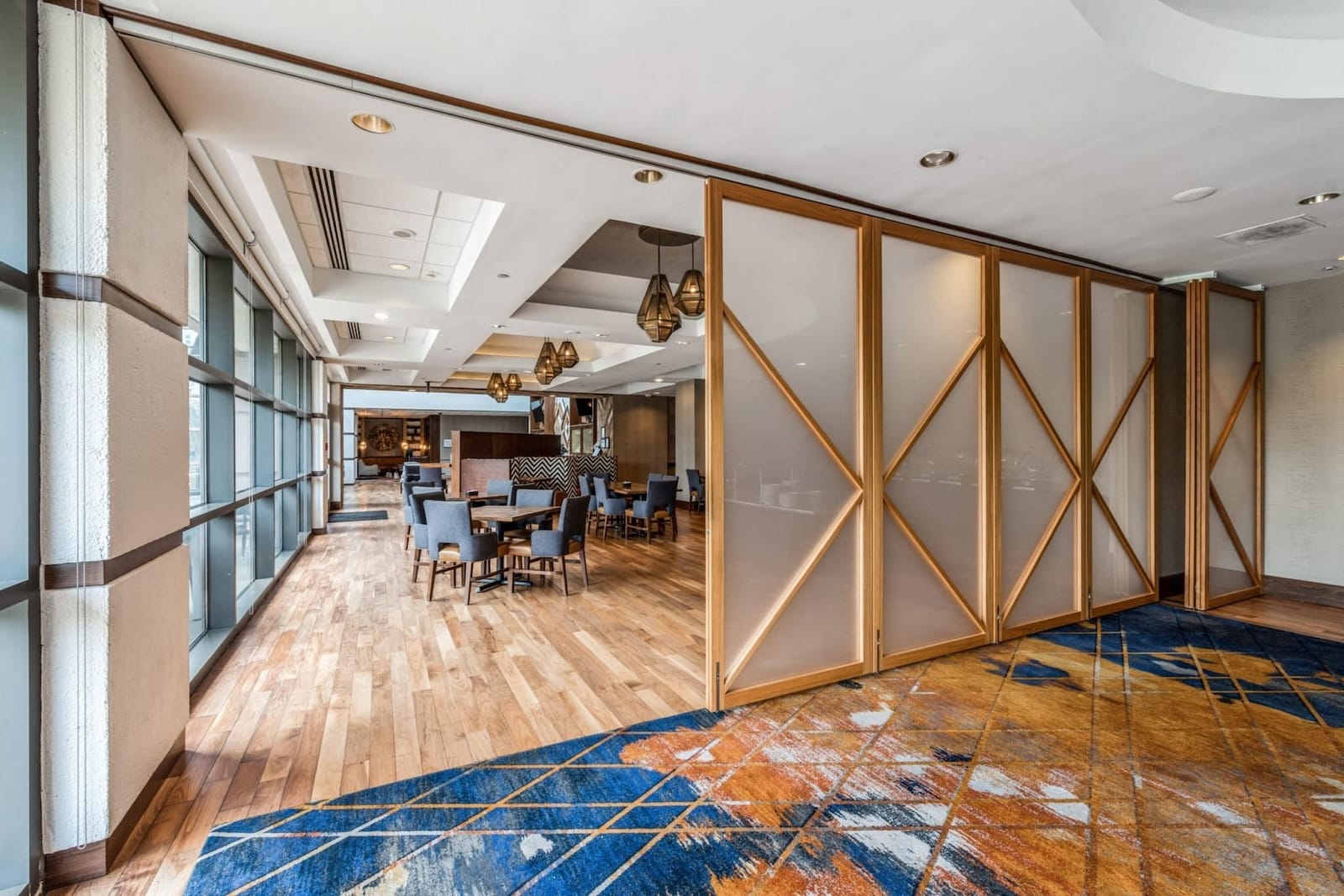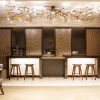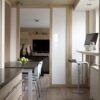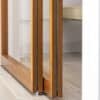Author: Luke Siegel, Founder and CEO of Raydoor®
For interior design projects large and small, glass is one of the most well-received materials for sliding doors, operable walls, and other partition systems — and for good reason. Glass is durable, sophisticated, and extremely versatile — accommodating a wide range of interior design and architectural styles, dimensional requirements, colors and textures, and other specifications.
Glass sliding doors may be the first solution that crosses your mind when imagining how to divide a room, but it may be worth digging a bit further to find a dividing solution that better serves your project’s needs.
Depending on the timeline, aesthetic vision, and space limitations, interior designers and architects should consider alternatives to the typical sliding glass door that will not only work better functionally but also transform the space into a work of art. Let’s take a closer look.
The Case for Non-Glass Sliding Doors
In contrast to their exterior counterparts, interior doors and walls can prioritize aesthetics, privacy, and flexibility over heft, insulation, and security. As such, many interior projects tend to opt for partition materials that are lighter weight, provide ease of movement, and feel at home in their inspiration board — all attributes that many glass alternatives offer in spades.
Outside of their design features, glass alternatives may also better accommodate project demands, such as timeline (glass doors may take longer to manufacture), budget (due to both more expensive materials and complexities with installation), and logistics (glass may be more difficult to ship, install, and maintain over the long-term than lighter-weight, more durable options).
Another important differentiator between glass and lighter materials is that the latter often requires less maintenance over time. Thick, glass-paneled doors are known for adding additional wear and tear to sliding door systems — which could mean more time, money, and resources spent on your door system down the line.
The Top 8 Sliding Glass Door Alternatives
Below, we share our top recommendations beyond sliding glass doors to consider for your next project, including both material and system alternatives.
By Material
1. Acrylic
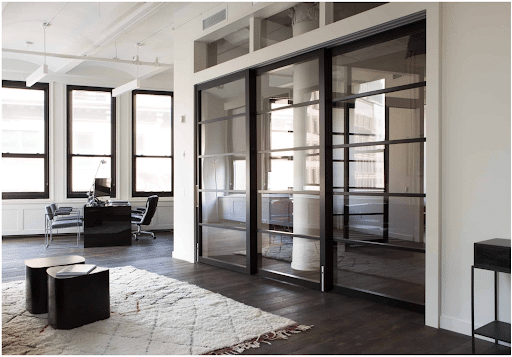
Compared to glass, acrylic and other resins are known for their durability, design flexibility, and competitive price point. Their lightweight construction not only makes acrylic sliding doors easier to ship, install, and maintain but also means that these dividing systems glide in their tracks with little to no resistance.
Improved optical clarity and sturdiness make acrylic extremely versatile and suitable for a wide range of projects — from large-scale office spaces to luxury boutique hotel lobbies and beyond.
See how we incorporate acrylic across our catalog of stunning room-dividing solutions:
2. Polycarbonate
Polycarbonate is a type of thermoplastic polymer characterized by exceptional durability, which contributes to its high scratch resistance, minimal maintenance, and long material lifespan. Acrylics and polycarbonates share several attributes that stand out against glass doors — such as their lighter weight and ease of installation — though there are key distinctions between the two worth noting.
Acrylic tends to have slightly greater optical clarity and light transmittance and is often preferred for its aesthetic qualities and glass-like appearance. Polycarbonate, on the other hand, is a slightly stronger material and has a higher impact resistance, which may make it the ideal option when durability and low upkeep are top priorities.
3. Wood
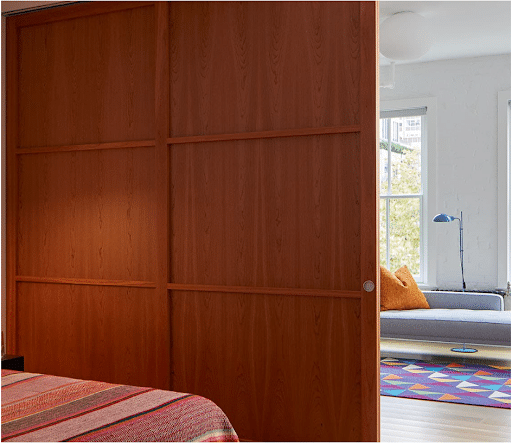
Wood veneers or other solid panel inserts are favorable to glass when privacy and seclusion are paramount. As a trade-off for the lack of natural light, wood paneling creates a warm, closed-off environment that can quickly transform into an airy, inviting space when opened. Wood veneers also deliver the same natural look and feel as solid wood doors — but at a fraction of the cost and weight.
By System
4. Swinging
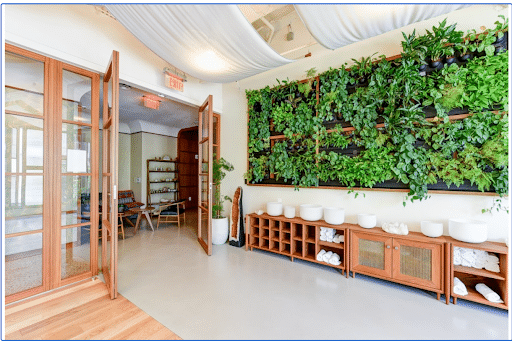
Swinging doors are a timeless, elegant design element that pairs well with a myriad of architectural styles in both commercial and residential spaces. And while a large, beautiful set of swinging glass doors may easily fit on the drawing board, it’s likely less feasible to fit into your budget. Plus, the additional bulk may contribute to installation and maintenance complications down the line.
When made out of acrylic, polycarbonate, or other resins, translucent swinging doors are more affordable, lightweight, easier to operate, and last longer than glass equivalents — all while delivering the same exhilarating aesthetic appeal.
5. Bifold
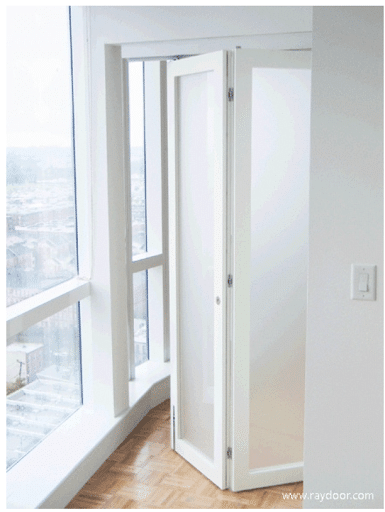
Bifold doors are a simple, affordable solution that is ideal when space is a limiting factor and functionality is just as important as presentation. Despite their near-universal appeal, however, bifolds may not even be considered if the only panel option is glass, as the extra weight can quickly constrict movement and deteriorate the system over the years.
Lighter solutions, such as acrylic and polycarbonate, again offer a critical advantage by allowing the system to fold frictionlessly and last longer than heavier systems. And when developed with a design-first mindset, bifolds can evolve from an everyday divider to a focal point in the room. Our folding doors, for example, allow plenty of natural light into the room to help your space stay vibrant and allow the divided spaces to feel connected to a larger whole.
6. Demountable Panels
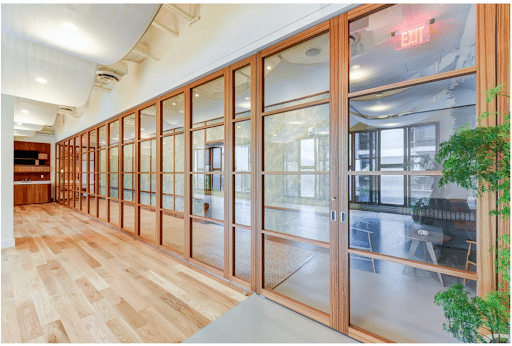
Fixed panels offer the perfect balance between rigidity and flexibility. Compared to a permanent wall addition, they allow for plenty of natural light and visibility while creating distinct areas within a larger room — making for a much simpler installation process.
Our fixed room divider panels can be combined with other doors and systems to meet the specific demands of your project. Combining fixed and sliding room divider panels is another effective strategy to keep costs down in situations where you do not need full openings in large spaces.
7. Barn
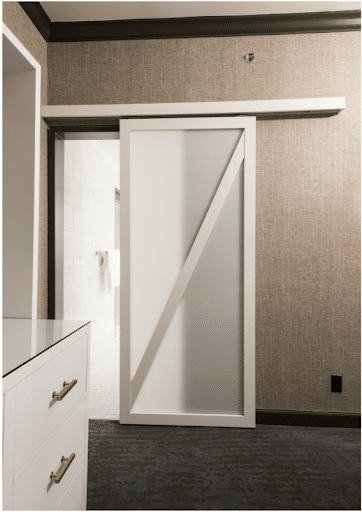
Although technically a sliding door, barn doors are a popular contemporary style that typically uses wood, acrylic, or materials other than glass that are a welcome contribution to rustic or farmhouse interior designs. A great option for narrow spaces or contemporary spaces that need a warm touch, barn doors have made their way into plenty of commercial and residential projects.
8. French
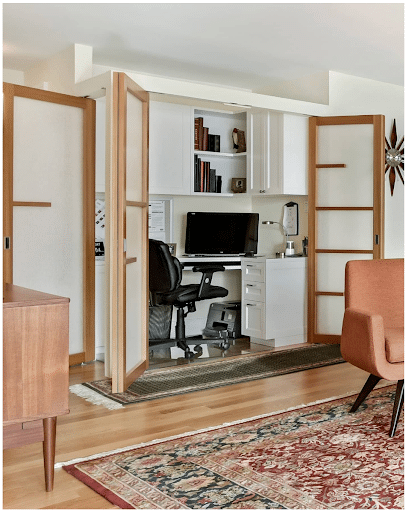
French doors are a distinct type of swinging door that delivers a welcoming and sophisticated quality to a room. Traditionally, french doors come in pairs and feature large, fully transparent glass panes — though other materials — such as acrylic or resins — that have the same or higher visual clarity can easily deliver the same elegant experience at a more competitive cost.
Frequently Asked Questions
What are the advantages and disadvantages of sliding glass doors?
Interior sliding glass doors allow abundant natural light to filter through the room, add a modern, stylish flair, and help rooms feel distinct yet connected. When used to their full potential, these systems help free up more interior space, and their easy-to-clean surface makes for simple routine upkeep.
Conversely, glass can offer less privacy if not thoughtfully installed with gaskets and seals — though you can still achieve visual privacy with privacy films or frosted glass. The extra weight is another potential disadvantage, as it can introduce complexities during installation and regular system maintenance.
Can you replace a sliding glass door with a sliding wall?
Depending on the opening size and the flexibility you’d like your room divider to have, you may consider replacing an existing sliding door with a sliding wall system. Large commercial spaces in particular — such as conference rooms, offices, and private gathering spaces — may benefit from having an operable wall versus a door, as the former can offer even more ways to use your space and leave a bold impression on the overall room.
What is a lightweight alternative to sliding glass doors?
Due to its lightweight construction, high durability, and design flexibility, acrylic is an appealing glass alternative that can contribute the same look and feel as its glass contemporaries — all while shedding some of the bulk.
Get Inspired for Your Next Project
Glass sliding doors have plenty to offer interior projects, both in terms of functionality and design sensibilities. It is, however, well worth your time to research alternatives that may be easier to install, sit at a more competitive price point, better align with functional use cases, or — perhaps most importantly — create an artistic statement that elevates the rest of the room.
Looking for more examples to fill your mood board? Find inspiration for your next project on our website.
